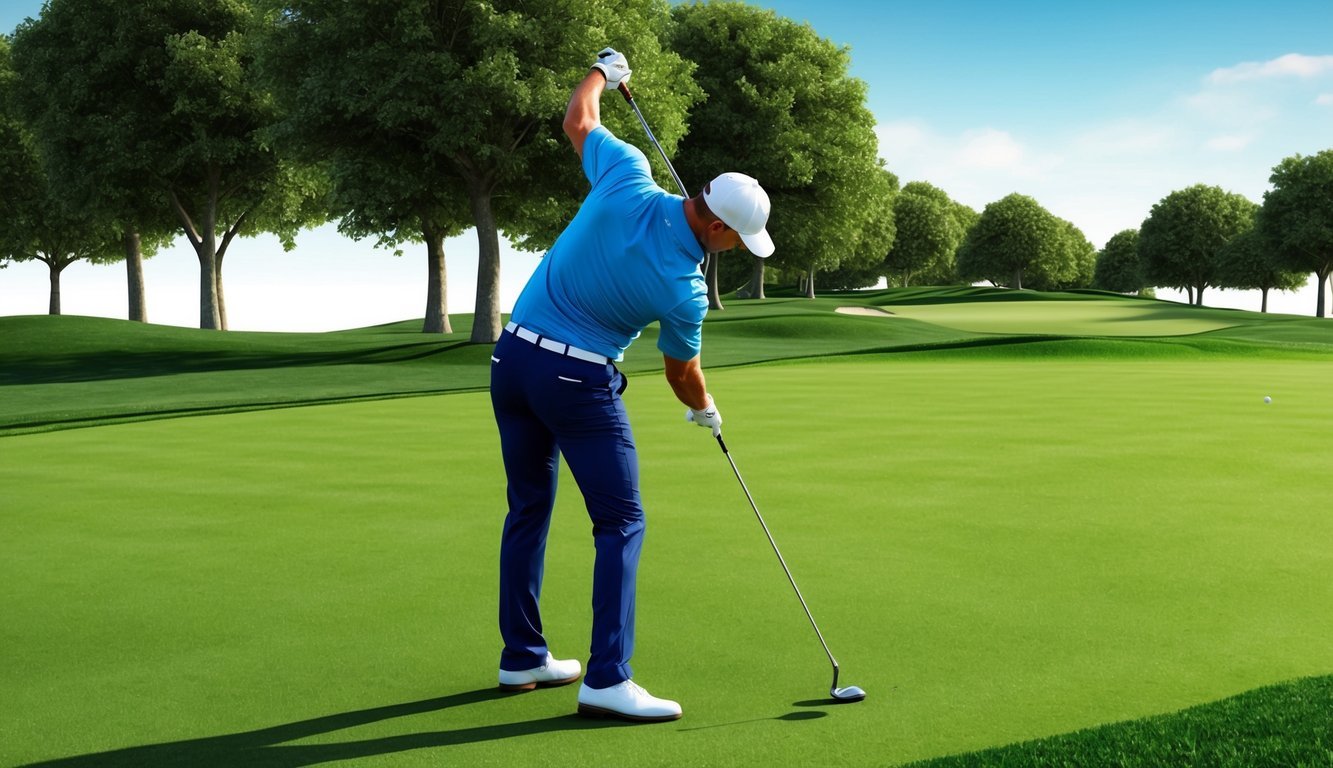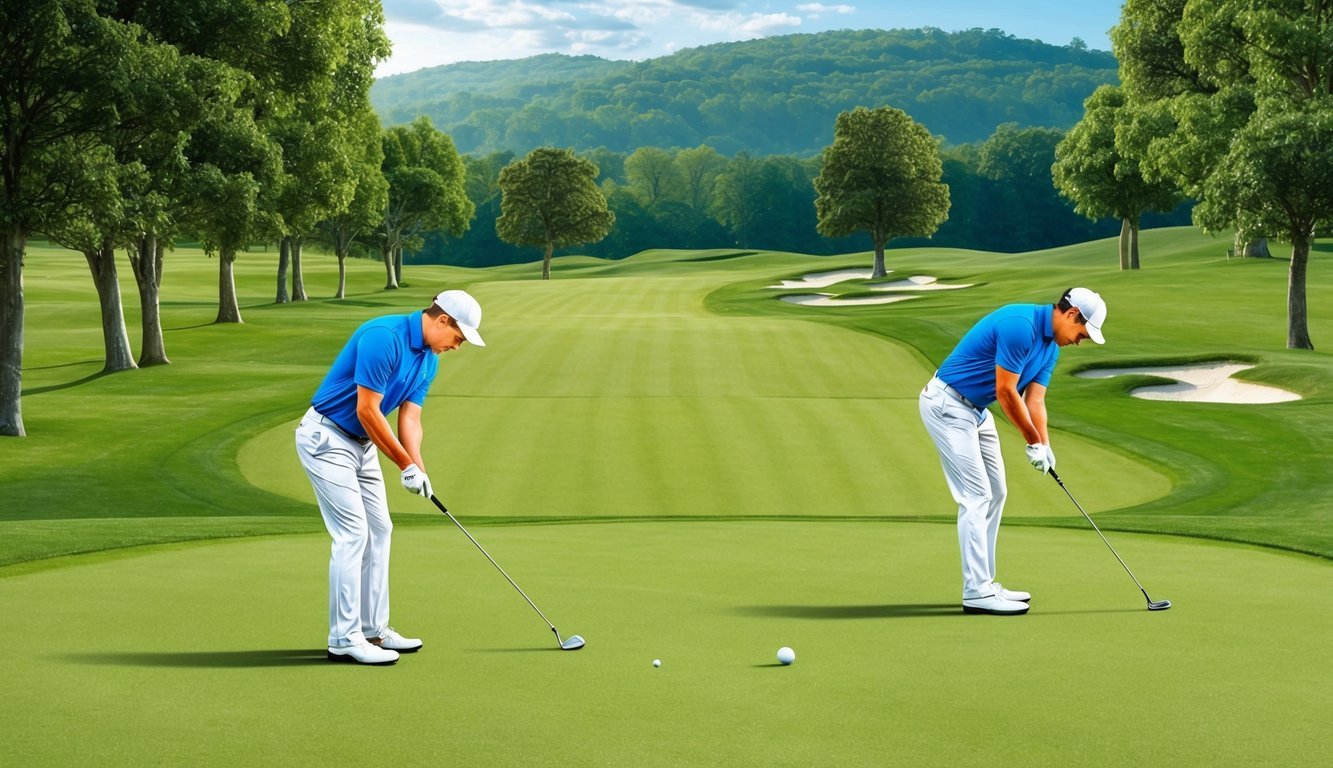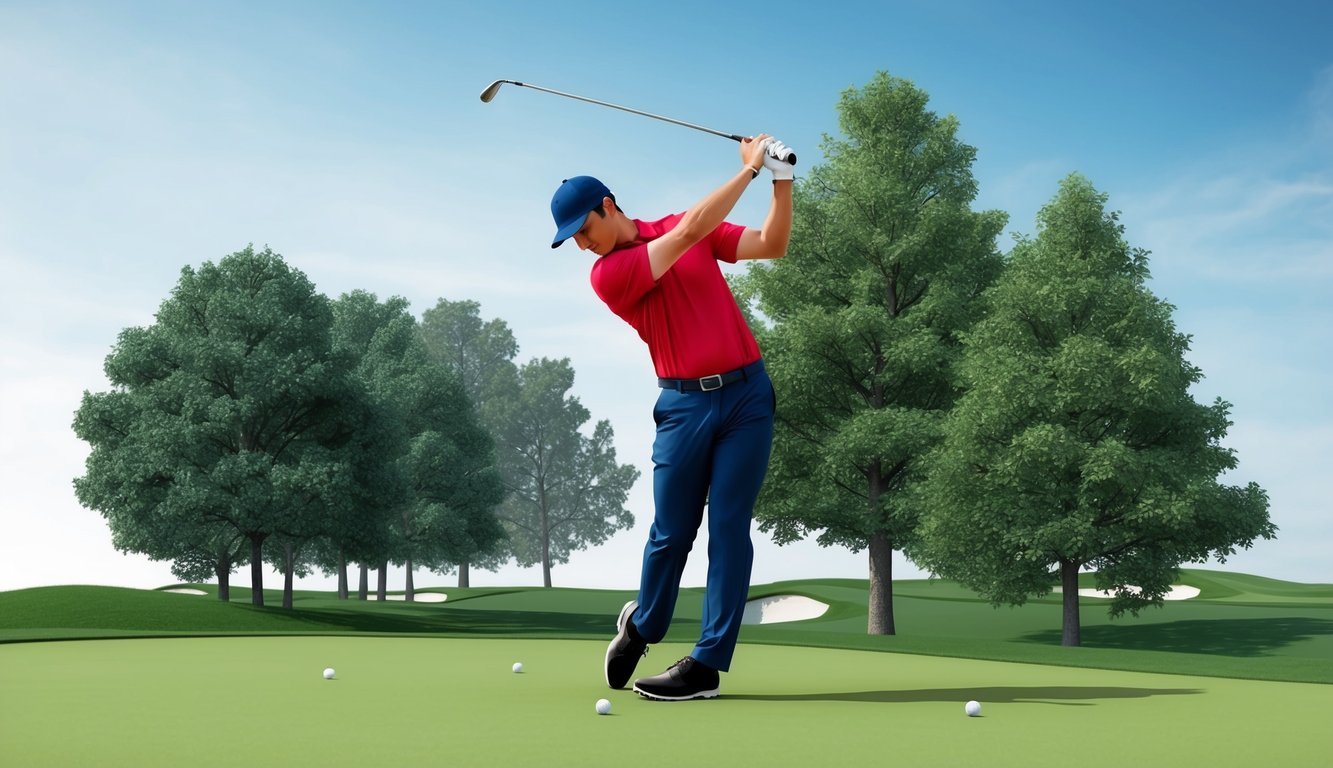Shaping golf shots is an exciting way to improve your golf game.
Shot shaping offers flexibility and control, allowing you to hook the ball around a tree or slice it to avoid a bunker. Learning to manipulate the ball’s flight lets you navigate challenging courses with greater precision and creativity.

In the world of golf, understanding these techniques sets apart novice players from seasoned golfers.
For instance, Golf Digest highlights how adjusting your grip can make a significant difference.
Adopting these strategies will not only enhance your skill set but also boost your confidence during play.
Exploring advanced shot techniques and refining your swing can turn any round into a rewarding experience.
Practical tips, like aligning your clubface to your desired target with drilled consistency, can transform how you tackle each hole.
Engaging with the mechanics of shot shaping positions you to impress your peers and take on even the most daunting courses with ease.
Key Takeaways
- Shape your shots to improve control.
- Practice techniques adjust ball flight.
- Apply tips to elevate your game.
Understanding Golf Shot Basics
Learning to shape a golf shot involves mastering straight shots as well as fades and draws.
Control over your shot shape can significantly impact ball flight and overall performance on the course.
The Fundamentals of Shot Shaping
To get started with golf shot shaping, focus on how your grip, stance, and swing path influence the ball. Grip should be adjusted carefully—more strength can help turn a fade into a draw, while a weaker grip can help with fades.
Your stance is another key factor; altering the position of your feet relative to the target can change the shot shape of your golf shots.
While working on your swing path, think of the clubhead’s journey from backswing to follow-through.
For straight shots, keep the swing path as neutral as possible.
To hit a draw, you’ll aim for an inside-out swing path, while for a fade, an outside-in path is effective.
Aim to practice regularly, using alignment aids like sticks or clubs laid on the ground.
Common Golf Shot Types
Common types of golf shots you’ll encounter include the straight shot, draw, and fade.
A straight shot follows a direct line from the clubface to the target, requiring even alignment.
A draw curves from right to left (for right-handed players) and is achieved by closing the clubface relative to the swing path.
This helps if your natural shot shape tends to be straight or faded.
In contrast, a fade moves left to right and needs an open clubface.
Each shot type demands practice and patience to gain control and accuracy.
When you understand how ball flight laws interact with your setup, your shot shaping becomes more intuitive.
Engaging with different golf shot shaping strategies enhances your adaptability on the course.
The Mechanics of Shaping Shots
Mastering shot shaping involves key elements such as adjusting your ball position and stance for consistent impact, along with controlling the swing path and clubface for desired trajectory.
Each of these factors plays a crucial role in determining the ball’s direction and curve.
Ball Position and Stance
Your ball position is crucial for shaping shots in golf.
Place the ball further back in your stance to produce a right-to-left curve, commonly known as a draw.
Conversely, move the ball forward for a left-to-right fade.
This adjustment impacts the angle of attack and can help you dictate the ball’s spin and flight.
Your stance should be aligned to support the desired shot shape.
For a draw, aim your feet and body right of the target, maintaining a foot position that encourages an in-to-out swing path.
To achieve a fade, align your feet left of the target, promoting an out-to-in path.
Consistency in your stance and ball placement is key to reliably shaping shots.
Swing Path and Clubface Control
The swing path influences the curvature of your shot.
Align your swing directionally with your feet, ensuring it matches your intended shot.
An in-to-out swing path tends to produce a draw, while an out-to-in path leads to a fade.
The angle and direction of your swing are pivotal for achieving the specific shot shape.
Equally important is your control over the clubface.
For a draw, keep the clubface slightly closed relative to your swing path.
For a fade, it should be open.
Mastery in clubface management allows you to effectively influence the ball’s direction and spin.
Practicing these techniques refines your ability to control and shape your golf shots.
Advanced Shot Techniques

Mastering advanced shot techniques can significantly improve your ability to navigate challenging golf courses.
Understanding how to adjust your shots in response to wind, obstacles, and varying elevations is crucial for maximizing your performance.
Playing with Wind and Obstacles
When you’re on the course, wind and obstacles like trees or doglegs can make shaping your shots necessary.
Use a fade or draw to navigate around such challenges.
A fade, which curves left to right for right-handed golfers, can help you tackle a dogleg right.
Alternatively, a draw, moving right to left, is useful for a dogleg left.
Adjusting the trajectory is vital.
In windy conditions, lower your ball flight with a punch shot or a stinger to maintain control.
Lowering the ball position in your stance helps in achieving these low shots, reducing the wind’s impact and keeping your ball on target.
Trees or other obstacles may require a low draw to curve around them.
Close your clubface slightly and swing from inside to out, which gives you the ideal curve without excessive height.
Executing High and Low Shots
To excel in varying course conditions, mastering both high and low shots is key. High shots provide the necessary elevation to clear obstacles and approach elevated greens.
Open your clubface, positioning the ball more forward, and use a full swing to achieve the desired elevation and soft landing.
For low shots, keep the ball back in your stance.
Using a lower lofted club helps to produce a driving ball flight.
The low trajectory is beneficial when attempting to achieve maximum distance in windy conditions or when avoiding overhead obstacles.
Each shot requires a different stance and approach to the clubface angle.
Whether it’s a high fade for a delicate approach or a low draw to punch through tough conditions, understanding these nuances elevates your game.
Practical Tips for Shot Shaping

Shot shaping requires precise technique and mental preparation.
By focusing on drills and routines at the driving range and ensuring both mental focus and physical readiness, you can consistently shape your shots effectively.
Drills and Practice Routines
Incorporate alignment sticks into your practice to ensure proper aim and trajectory.
Place an alignment stick parallel to your target line.
Aim the clubface square to this stick, aligning your feet, hips, and shoulders parallel to another stick to your right.
Practice swinging along your foot line to establish consistency.
Experiment with grip pressure.
A lighter grip allows more fluid motion, aiding in control.
Try the clock drill.
Visualize a clock face around the ball where 12 o’clock points to the target.
Adjust your swing to hit the ball at various “clock” positions, achieving different shot shapes.
Regular practice on the driving range builds skill.
Focus on technique, address position, and always commit to the shot.
Use these drills and tips to refine your shot shaping.
Mental and Physical Preparation
Mental focus is crucial in shot shaping.
Visualize your shot before hitting the ball.
Picture its trajectory and landing spot.
Believe in your ability to execute the shot as imagined.
Ensure a relaxed physical state to maintain consistency.
Practice deep breathing to relax muscles and reduce tension.
A calm mind and body enable better concentration on your grip and aim.
Address position is key.
Stand with balanced weight distribution, providing a solid foundation.
Prioritize aligning your grip and stance to suit the desired shot shape.
Commit to each shot fully, trusting in your preparation and practiced techniques.
Regular practice not only refines your skills but builds confidence, ensuring success on the course.
Improving Your Game on the Course

Enhancing your play on the course involves strategic management and adapting to varied conditions.
Mastering shot shaping to navigate challenges ensures a better outcome, whether avoiding hazards or aiming for the green with precision.
Course Management Strategies
Effective course management revolves around strategic decision-making and understanding the layout.
Assess the fairway and green before hitting your approach shots.
This helps you decide whether to aim for a low fade around obstacles or focus on hitting the golf ball straight.
Knowing the location of hazards like bunkers and water can guide your shot shaping techniques.
Making these assessments allows you to adapt your swing to the course’s demands.
Opt for accuracy over distance, especially when working the ball around the course or navigating tight spots.
Diversifying your shot repertoire prepares you for varied layouts.
Practice producing consistent golf shots with different clubs.
This enhances your ability to tackle any challenge and improves your overall performance.
Adapting to Course Conditions
Weather and terrain can greatly impact your game.
On windy days, you can manage the ball’s trajectory by learning to shape golf shots effectively.
Try keeping it low to avoid gusts influencing the shot.
Similarly, you should adjust your stance and swing technique to maintain accuracy.
Course conditions vary widely.
Wet fairways might require different strategies than dry conditions.
Observe how the ball reacts after landing and adjust your swing path.
Adaptation is crucial during approach shots to ensure you land near the intended target.
Staying aware of these factors helps maintain control over your shots.
Practice regularly to develop the ability to respond to fluctuating conditions.
This will maximize the potential for a successful round.

